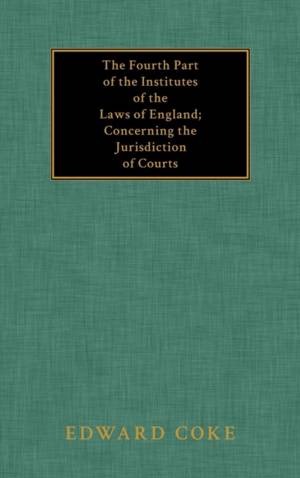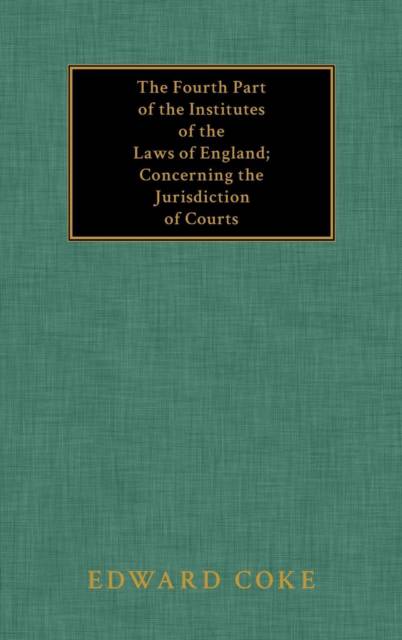
- Retrait gratuit dans votre magasin Club
- 7.000.000 titres dans notre catalogue
- Payer en toute sécurité
- Toujours un magasin près de chez vous
- Retrait gratuit dans votre magasin Club
- 7.000.0000 titres dans notre catalogue
- Payer en toute sécurité
- Toujours un magasin près de chez vous
The Fourth Part of the Institutes of the Laws of England; Concerning the Jurisdiction of Courts
Edward Coke
Livre relié | Anglais
67,45 €
+ 134 points
Description
Reprint of the last and best edition with Butler and Hargrave's notes, and with mistakes corrected from the 1681 folio edition. Hardcover, [xiv], [1], 364, [49] pp. Paging irregular; star-paged to 1681 folio edition. Originally published: London: Printed for W. Clarke and Sons, 1817. For this Institute Coke gathered miscellaneous materials that were not in the first three Institutes, and included translations of ancient statutes that appeared in the earlier Institutes in the original Latin or Law French, with notes and references to later authorities cited by Butler and Hargrave. The Fourth Part outlines the authority and jurisdictions of the Court of Star-Chamber, Kings Court, Chancery, the Court of Common Pleas, Ecclesiastical Courts, Courts of Exchequer, Augmentations, Admiralty, the Justices Assise, Courts in Universities of Cambridge and Oxford, Court of the Commissioners Upon the Statute of Bankrupts, the Marshalsea, the Stannaries, the Eighteen Courts of the City of London, the Court of Pipowders (concerning Markets and Fairs), the Courts of the Forest Countries, various ecclesiastical courts and many more. Sir Edward Coke [1552-1643] was considered to be the greatest legal practitioner of his day. He is known for writing Law Reports, also referred to as Coke's Reports. They were an archive of law reports of cases he contributed in, watched, or was familiar with. They started with the notes he made as a law student in 1572. He started fully reporting cases in October 1579. Coke never officially published his entire Reports during his lifetime. Select cases were published in 1600. Coke's challenge to the ecclesiastical courts is seen as the origin to the right to silence.
Spécifications
Parties prenantes
- Auteur(s) :
- Editeur:
Contenu
- Nombre de pages :
- 478
- Langue:
- Anglais
Caractéristiques
- EAN:
- 9781584772026
- Date de parution :
- 06-08-15
- Format:
- Livre relié
- Format numérique:
- Genaaid
- Dimensions :
- 152 mm x 229 mm
- Poids :
- 866 g

Les avis
Nous publions uniquement les avis qui respectent les conditions requises. Consultez nos conditions pour les avis.






